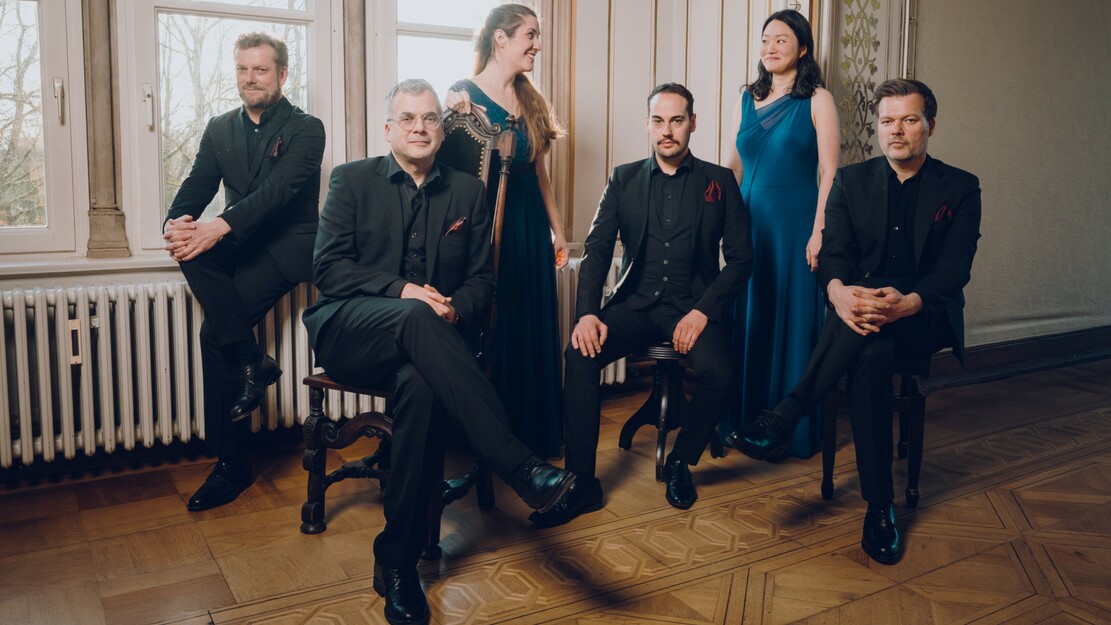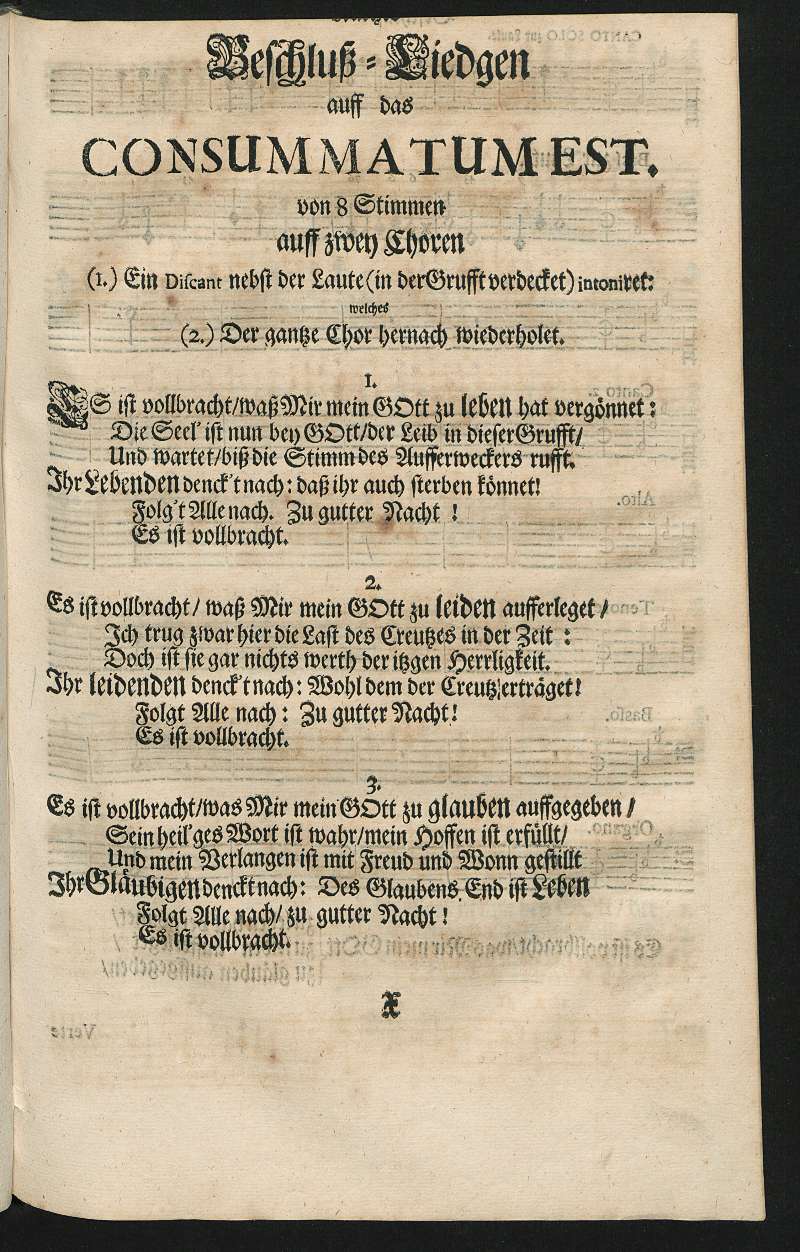THE MISSING LINK: From Schütz to Bach – Michael Wiedemann’s Begräbniß=Concerte
19 November Germany / Hamburg - St. Michaelis
A substantial part of 17th-century occasional music has survived in the form of so-called Kasualdrucke. These were more or less representative publications that documented the course of solemn occasions –casualia – and often provide valuable insights into the lived reality of the early modern period and its socio-cultural context. Among them, funeral sermons occupy the largest space. They contain, in addition to the sermon itself and the biography of the deceased, elements such as farewell speeches, poems, and frequently also pieces of music, e.g. hymns, motets or sacred concertos. The most significant example is Heinrich Schütz’s three-part composition Musikalische Exequien , written in 1636 for the burial of Heinrich Posthumus Reuß and to this day regarded as the most intimate and impressive funeral music of the early modern era. Almost sixty years later, Michael Wiedemann (1659–1719) composed his Begräbniß=Concerte in 1693 for the funeral ceremonies of Baron Sigismund Heinrich von Bibran und Modlau. In three parts, Wiedemann unfolds a musical spectrum that ranges from conventional settings, through artfully designed polychorality, to symbolic concentration.The first part, written for five voices and five strings, recalls compositions of his contemporaries, but what is remarkable is the intensive use of chorales. In the second part, the conception increases to a dreichöriges Concert (three-choir concerto), which Wiedemann describes in detail with regard to its spatial disposition: the Lehr-Chor (Teaching Choir) sings biblical texts accompanied by two recorders. The Glaubens-Chor (Faith Choir) responds in duet accompanied by three viols and the Seelen-Stimme (Soul’s Voice) - hidden behind the coffin - intones the chorale Herzlich tut mich verlangen (O Sacred Head, Now Wounded), accompanied by a lute. Here, space, symbolism and timbre come together: recorders of pastoral, veiled character, viols as an expression of lament, and the hidden lute as the intimate voice of the soul. The third part leads stylistically into the High Baroque. In the Beschluss-Liedgen (Closing Song), a soprano hidden in the crypt sings Consummatum est (“It is enough”), accompanied by a lute, with each line repeated by the “earthly” ensemble. The deceased himself here appears as fictio personæ: Sigismund von Bibran und Modlau speaks as the “Soul’s Voice”. Particularly noteworthy is the three-part structure, which directly links to Schütz’s Exequien. Both works follow the same liturgical dramaturgy - one section before, two after the sermon. They thus belong to the very few large-scale funeral compositions of the 17th century. In Johann Sebastian Bach’s Actus tragicus (1707) we once again find musical parallels to Wiedemann: the chorale as a guiding thread, the scoring with viols and recorders, and the “dissolution” of a solitary Seelen-Stimme into eternity. All this brings the golden art of dying of the 17th century to its fulfilment.
Schütz, Wiedemann and Bach thus appear in a developmental line: Schütz as the creative source, Wiedemann as the bridge to the High Baroque, Bach as the fulfiller.
For the first time since 1693, Wiedemann’s work will be heard again – a union of past and present that opens new horizons. Eight singers and seven instrumentalists of Ensemble Polyharmonique will bring this missing link to life at St. Michaelis in Hamburg (19 November 2025).
Schütz, Wiedemann and Bach thus appear in a developmental line: Schütz as the creative source, Wiedemann as the bridge to the High Baroque, Bach as the fulfiller.
For the first time since 1693, Wiedemann’s work will be heard again – a union of past and present that opens new horizons. Eight singers and seven instrumentalists of Ensemble Polyharmonique will bring this missing link to life at St. Michaelis in Hamburg (19 November 2025).
Alexander Schneider / Cosimo Stawiarski
program:
Melchior Franck - Unseres Hertzen Freude hat ein Ende (a cappella ATTB a lontano)
Michael Wiedemann - Begräbniß=Concerte (with interludia by Johann Kessel)
Heinrich Schütz - Musikalische Exequien - SWV 279-281
Bach - Actus Tragicus - BWV 106
program:
Melchior Franck - Unseres Hertzen Freude hat ein Ende (a cappella ATTB a lontano)
Michael Wiedemann - Begräbniß=Concerte (with interludia by Johann Kessel)
Heinrich Schütz - Musikalische Exequien - SWV 279-281
Bach - Actus Tragicus - BWV 106
Ensemble Polyharmonique
Magdalene Harer - soprano
Joowon Chung - soprano
Alexander Schneider - alto & artistic direction
Jaro Kirchgessner - alto
Johannes Gaubitz - tenore
Sören Richter - tenore
Tobias Ay - basso
Matthias Lutze - basso
Anna Fusek - violino/ recorders
Kerstin Fahr - violino / recorders
Alma Stoye - viola da gamba
Christian Heim - viola da gamba
Frauke Hess - violone
Bernhard Reichel - tiorba
Flóra Fábri - organo
Cosimo Stawiarski - editio prima



